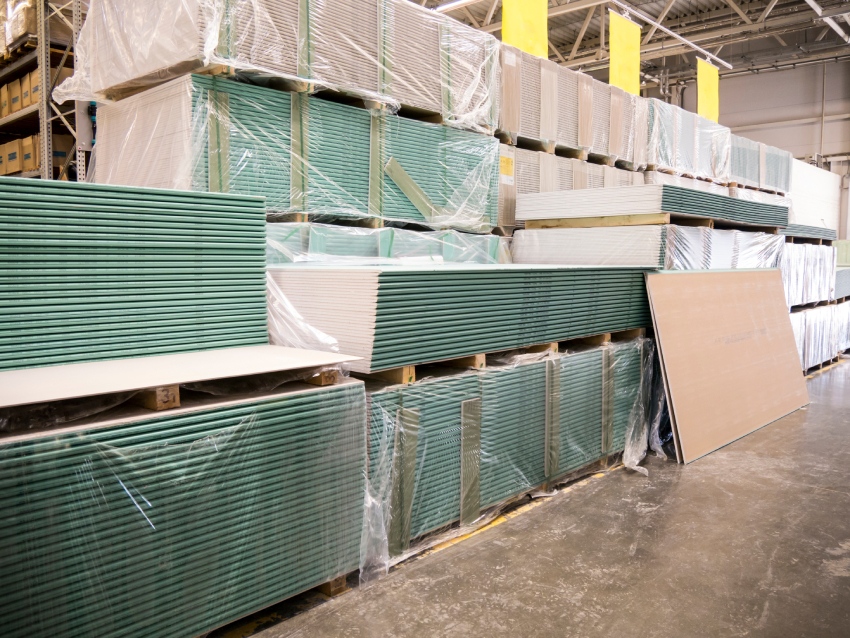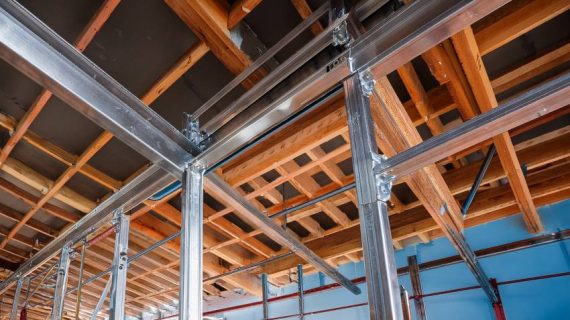The Benefits of a Single Source Supplier for Drywall Systems
Sourcing building materials from multiple suppliers might seem smart for getting the best prices and avoiding supply chain disruptions. But when it comes to drywall systems, this approach often creates more problems than it solves. The complexity of coordinating multiple suppliers and managing quality variations can quickly outweigh any perceived cost savings.
Here’s what most contractors discover too late: the cheapest material price rarely translates to the lowest project cost. When you factor in coordination time, quality inconsistencies, and delivery complications, single source suppliers often provide better value.
The construction industry is recognizing that supplier relationships are strategic assets, not just transactional necessities. Companies that treat suppliers as partners consistently achieve better project outcomes.
Tips for Sourcing Suppliers of Gypsum
Finding the right gypsum supplier requires more than comparing price lists. The best suppliers provide value that extends beyond the products themselves. Follow these tips:
- Evaluate technical capabilities first, not pricing. Suppliers who understand building systems and installation best practices can help prevent costly mistakes. Look for suppliers who employ technical staff and provide installation support.
- Assess supply chain reliability by examining the supplier’s track record during challenging periods. Reliable suppliers maintain inventory buffers and communicate proactively about potential delays.
- Quality consistency is critical because variations between batches can create installation problems. Suppliers who work with established manufacturers are more likely to deliver consistent quality.
- Geographic coverage matters for multi-location contractors. Suppliers with regional distribution networks can provide consistent service across multiple job sites.
Single Sourcing vs. Sole Sourcing in Construction
Understanding the difference between single sourcing and sole sourcing is crucial for making informed supplier decisions. These terms represent fundamentally different approaches.
Single sourcing is a strategic decision to use one supplier for a particular category of materials, even when multiple qualified suppliers are available. This approach captures benefits like better pricing and stronger supplier relationships.
Sole sourcing occurs when only one supplier can meet the project requirements, either because of technical specifications or geographic constraints. This situation provides fewer options but may be necessary for specialized applications.
The key difference is choice. Single sourcing is a deliberate strategy to optimize supplier relationships, while sole sourcing is often a constraint imposed by project requirements.
Risk profiles differ significantly. Single sourcing allows for backup suppliers to be identified and qualified. Sole sourcing provides no alternatives if the supplier experiences problems.
Advantages and Disadvantages of Single Sourcing
Single sourcing offers compelling advantages for drywall systems, particularly when working with suppliers who understand system-level performance. Here are some of the advantages and disadvantages of single sourcing:
- Cost advantages often exceed simple volume discounts. Single source suppliers can optimize their operations around your business, reducing costs. They can also provide better payment terms and more efficient logistics.
- Quality consistency improves when working with a single supplier who understands your standards. This reduces variation between deliveries.
- Technical support becomes more valuable when suppliers understand your projects. Single source suppliers can provide customized training and troubleshooting support.
- Administrative efficiency improves significantly with single sourcing. One contact for orders, deliveries, and problem resolution reduces coordination time.
- However, single sourcing creates risks that must be managed. Supply chain disruptions can have greater impact when alternative suppliers aren’t readily available.
- Supplier dependency can become problematic if the relationship deteriorates. Regular performance reviews help mitigate these risks.
Advantages and Disadvantages of Sole Sourcing
Here are some of the advantages and disadvantages of sole sourcing:
- Sole sourcing situations require different management approaches because alternatives may not exist.
- Specialized capabilities often justify sole sourcing arrangements. When suppliers have unique technical expertise or proprietary products, the value they provide may outweigh the risks of supplier dependency.
- Relationship depth tends to be stronger in sole sourcing situations because both parties understand the mutual dependency. This can lead to better service and collaborative problem-solving.
- However, sole sourcing creates significant risks. Price negotiation power is limited when alternatives don’t exist. Supply chain disruptions can halt projects if backup sources aren’t available.
- Innovation may be limited when suppliers don’t face competitive pressure. Regular market research helps ensure that sole source suppliers continue to provide competitive value.
Companies like Mada Gypsum demonstrate how single source suppliers can provide value that extends beyond products to include technical support and system-level expertise that helps contractors achieve better project outcomes. Contact us for more information today.






